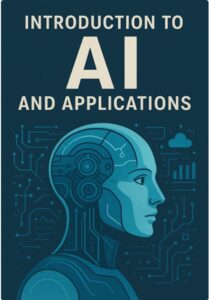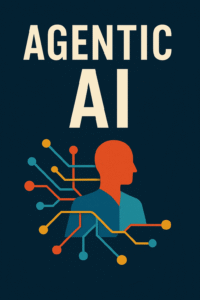Image Source: https://images.app.goo.gl/1xuuw12FnwoHEEQEA
“Ethical deepfake” refers to the responsible and conscientious use of deepfake technology, a form of artificial intelligence (AI) that involves creating highly realistic and often indistinguishable synthetic media. Deepfakes typically involve the manipulation of images, videos, or audio recordings using advanced machine learning algorithms.
Ethical considerations in the context of deepfakes revolve around using this technology in a manner that aligns with moral principles, respects individuals’ rights, and avoids causing harm or deception. Here are key aspects of ethical deepfake usage:
- Informed Consent: Ethical deepfake projects prioritize obtaining informed consent from individuals whose likenesses are being used or manipulated. This involves transparently explaining the nature of the project, its purpose, and how the synthetic media will be utilized.
- Privacy Protection: Respecting the privacy of individuals is a cornerstone of ethical deepfake usage. This includes avoiding the creation and dissemination of deepfakes that intrude upon someone’s private life or manipulate personal information without permission.
- Avoiding Deception: Ethical deepfake applications steer clear of deceptive practices, such as creating content that could be misconstrued as genuine or used to spread false information. This aligns with a commitment to truthfulness and transparency.
- Preventing Harm: Ethical considerations involve assessing the potential impact of deepfake content on individuals and society. This includes avoiding content that could incite violence, cause emotional distress, or contribute to the spread of misinformation.
- Cultural Sensitivity: When creating deepfakes for various applications, including entertainment or educational purposes, ethical considerations include being culturally sensitive. This involves avoiding stereotypes, misappropriation, or any form of content that could be offensive to particular groups.
- Human Augmentation, Not Replacement: Ethical deepfake applications recognize the value of human presence and interaction. Rather than replacing human roles entirely, ethical usage involves using deepfake technology to enhance experiences, education, or accessibility in a way that complements human involvement.
- Regulatory Compliance: Adhering to relevant laws and regulations is a fundamental ethical principle. This includes compliance with data protection and privacy laws, intellectual property rights, and any specific regulations governing the use of deepfake technology.
- Open Communication: Ethical deepfake projects involve open communication about the use of synthetic media. This includes clearly indicating when content is generated by AI and not by the depicted individuals, helping to prevent misunderstandings.
By integrating these ethical principles into the development and deployment of deepfake technology, creators and organizations can harness its potential benefits while minimizing the risks associated with misuse or unintended consequences. Ethical deepfake practices aim to strike a balance between innovation and responsible, respectful use of this powerful technology.
Ethical Applications and Examples
| Application | Description | Ethical Considerations |
|---|---|---|
| Entertainment and Filmmaking | Seamless integration of historical figures or bringing deceased actors back to the screen for innovative storytelling. | Obtaining necessary permissions, avoiding deception, and respecting the dignity of individuals portrayed. |
| Education and Training Simulations | Creating realistic simulations for interactive learning experiences, such as historical figures guiding students or language practice with virtual native speakers. | Ensuring simulations enhance education without distorting historical truths or promoting misinformation. |
| Cross-Cultural Understanding | Developing simulations that allow users to experience the world through diverse perspectives, fostering empathy and understanding. | Ensuring representations are culturally sensitive and avoiding stereotypes or misappropriation of cultural identities. |
| Personalized Healthcare Support | Virtual medical professionals with realistic facial expressions and communication skills assisting patients in therapy. | Prioritizing patient consent, maintaining privacy, and ensuring the virtual professionals are developed to enhance, not replace, human interaction. |
| Accessibility in Technology | Customized deepfake-generated voices for individuals with speech impediments or communication disorders, facilitating more natural and expressive communication. | Ensuring inclusivity in the development of these tools and respecting individual rights and privacy. |
Examples of Ethical Deepfake Applications:
1. Entertainment: Bringing Icons Back to Life
Imagine a film that seamlessly incorporates historical figures, offering audiences an immersive experience with the likes of Abraham Lincoln or Amelia Earhart. By obtaining the necessary permissions and employing deepfake technology ethically, filmmakers can revive iconic personalities for educational or entertainment purposes without distorting historical accuracy.
2. Education: Interactive Learning Journeys
In educational settings, deepfake simulations can transport students to pivotal moments in history. For instance, a virtual Albert Einstein could guide physics students through groundbreaking discoveries. Ethical considerations involve ensuring that these simulations enhance learning without veering into misinformation or altering historical truths.
3. Cross-Cultural Understanding: Walking in Others’ Shoes
Deepfake technology can foster cross-cultural understanding by allowing users to experience the world through the eyes of individuals from different backgrounds. For example, a simulation featuring a day in the life of someone from a different culture could cultivate empathy and break down stereotypes. Ethical use requires sensitivity to cultural nuances and avoiding misappropriation.
4. Healthcare: Virtual Support for Mental Health
In the realm of healthcare, deepfake-generated virtual therapists with realistic expressions could provide support in mental health treatment. Ethical considerations center around prioritizing patient consent, maintaining the privacy of sensitive health data, and ensuring that these virtual professionals complement human care rather than replacing it.
5. Accessibility in Technology: Empowering Voices
For individuals with speech impediments or communication disorders, deepfake-generated voices can offer a more natural and expressive means of communication. The ethical development of such tools involves a commitment to inclusivity, respecting individual rights, and ensuring that these technologies enhance accessibility without compromising privacy.
In navigating the ethical landscape of deepfake technology, these positive applications demonstrate the potential for responsible innovation. By embracing a commitment to ethical considerations, we can harness the benefits of deepfake technology while mitigating potential risks and ensuring a positive impact on society











